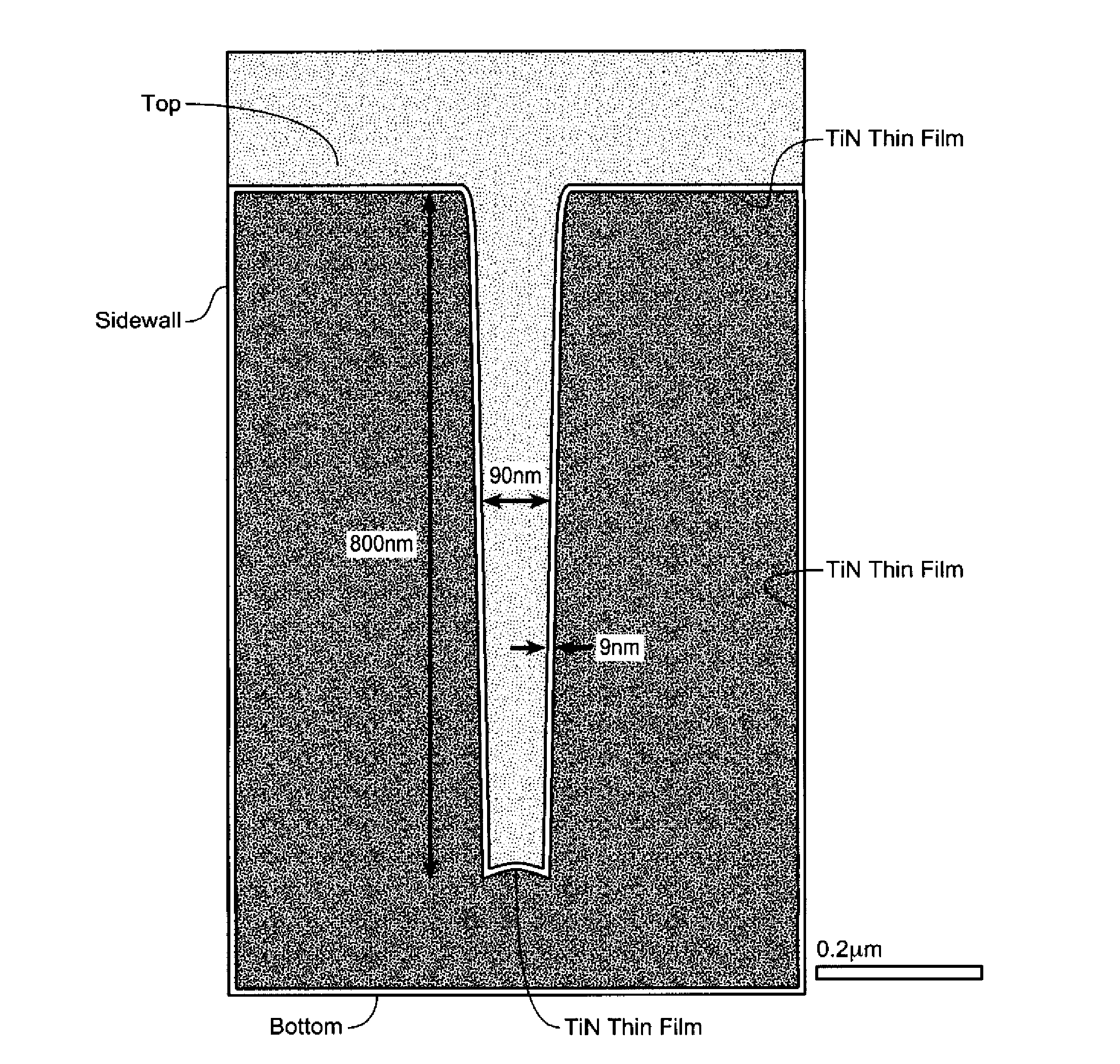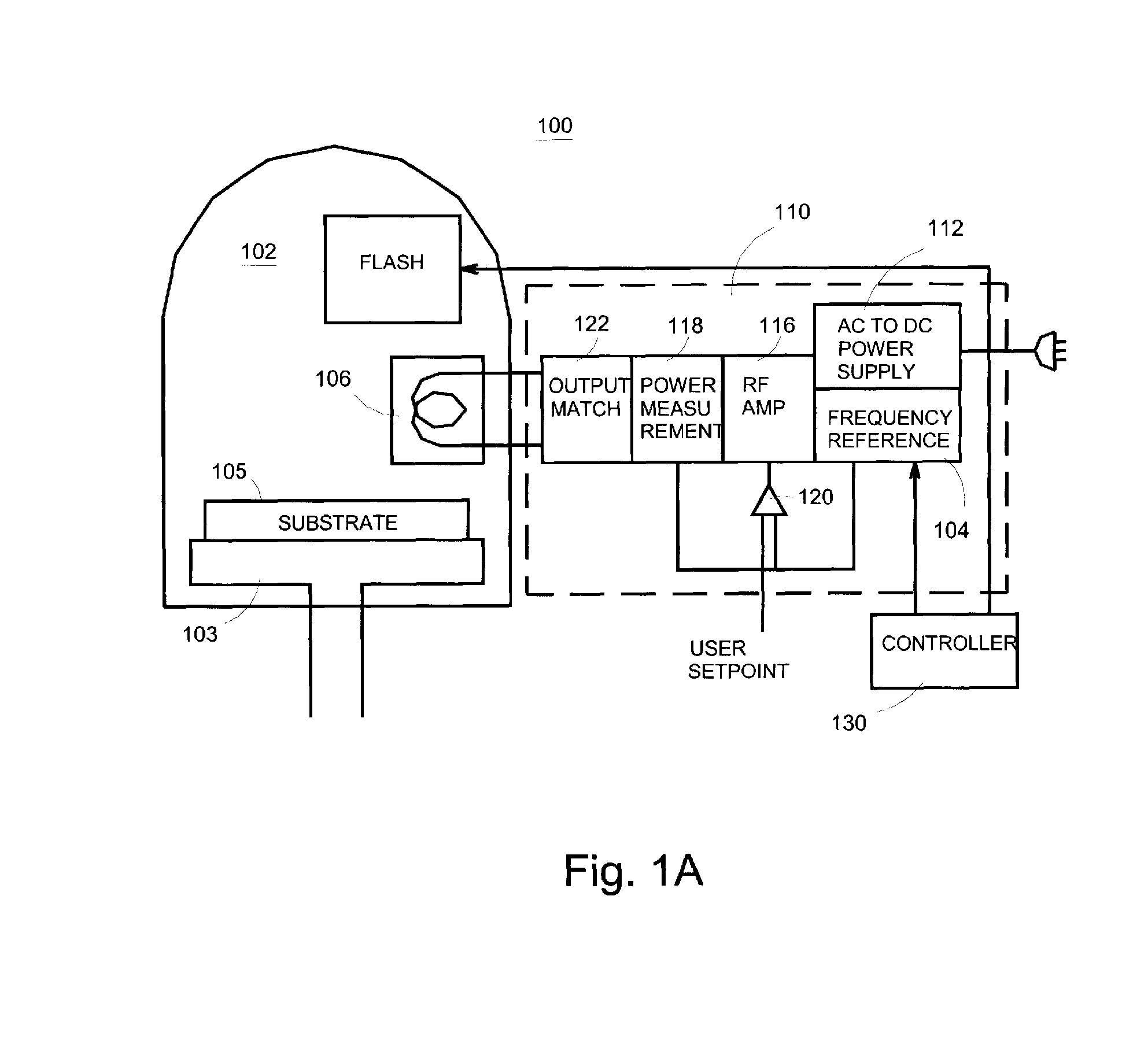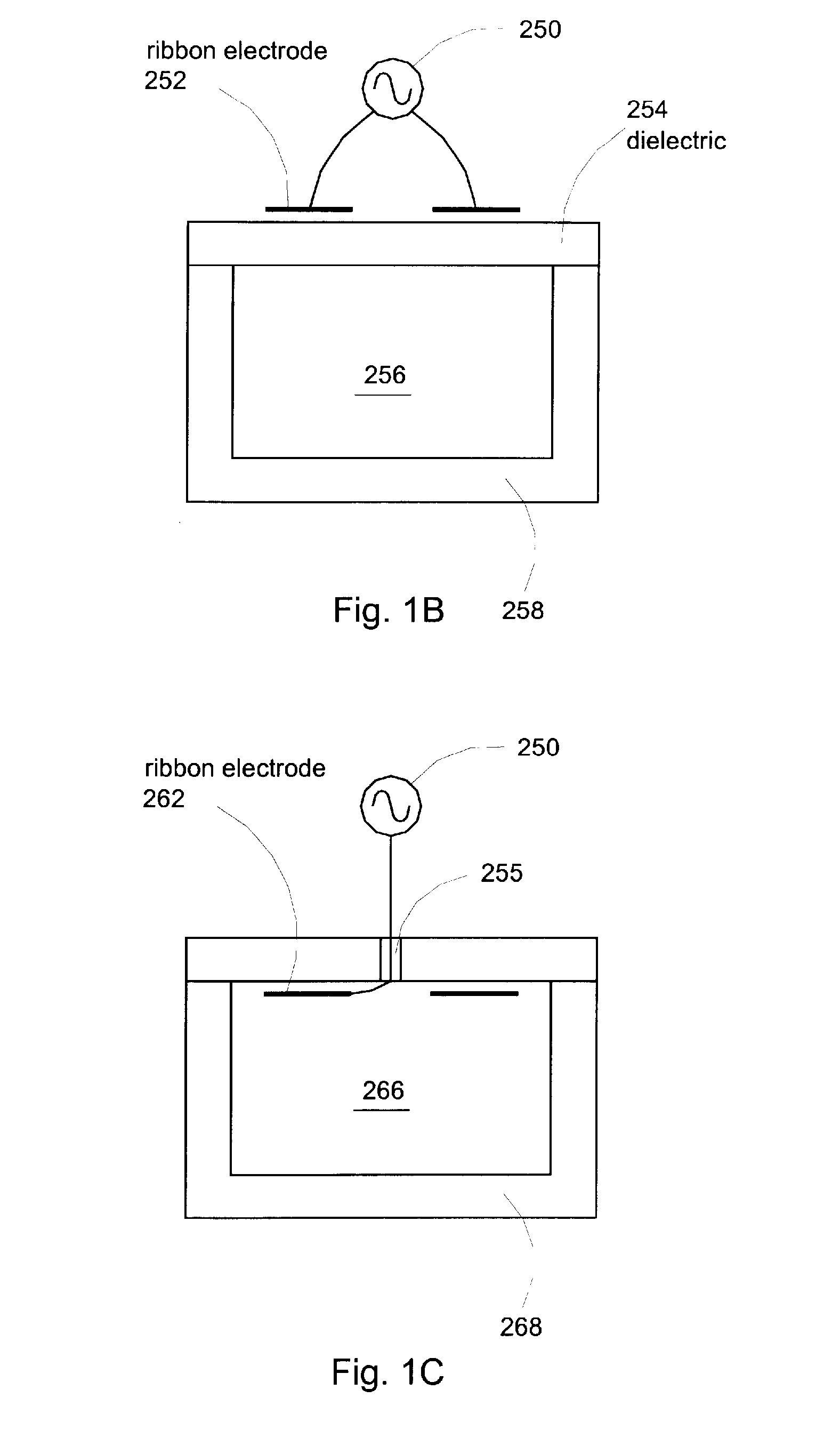Nanolayer deposition using plasma treatment
- Summary
- Abstract
- Description
- Claims
- Application Information
AI Technical Summary
Benefits of technology
Problems solved by technology
Method used
Image
Examples
second embodiment
[0036]Turning now to FIG. 1B, a second embodiment is shown. FIG. 1B includes a helical ribbon electrode 252 connected to a generator 250. The helical ribbon electrode 252 rests above a dielectric wall 254. The dielectric wall 254 rests above a chamber 256 and is supported by chamber walls 258. The dielectric wall 254 allows the energy generated from the generator 250 to pass through to generate a plasma inside the chamber 256. The dielectric materials can be any non-metallic materials such as ceramics, glass, quartz, or plastic.
third embodiment
[0037]FIG. 1C shows a third embodiment where the helical ribbon electrode 262 is positioned inside a chamber 266 with walls 268. The walls 268 has a electrical feed through 255 through which the generator 250 can drive the helical ribbon electrode 262.
fourth embodiment
[0038]FIG. 1D shows a fourth embodiment where the helical ribbon electrode 272 wraps around a tubular dielectric wall 278. A chamber 276 is positioned within the helical ribbon electrode 272 and the tubular dielectric wall 278.
PUM
| Property | Measurement | Unit |
|---|---|---|
| Thickness | aaaaa | aaaaa |
| Pressure | aaaaa | aaaaa |
| Thickness | aaaaa | aaaaa |
Abstract
Description
Claims
Application Information
 Login to View More
Login to View More - R&D
- Intellectual Property
- Life Sciences
- Materials
- Tech Scout
- Unparalleled Data Quality
- Higher Quality Content
- 60% Fewer Hallucinations
Browse by: Latest US Patents, China's latest patents, Technical Efficacy Thesaurus, Application Domain, Technology Topic, Popular Technical Reports.
© 2025 PatSnap. All rights reserved.Legal|Privacy policy|Modern Slavery Act Transparency Statement|Sitemap|About US| Contact US: help@patsnap.com



